Fasolia is a rich tomatoey bean stew, brimming with large chunks of lamb or beef. Green bean stew is usually served over vermicelli rice.
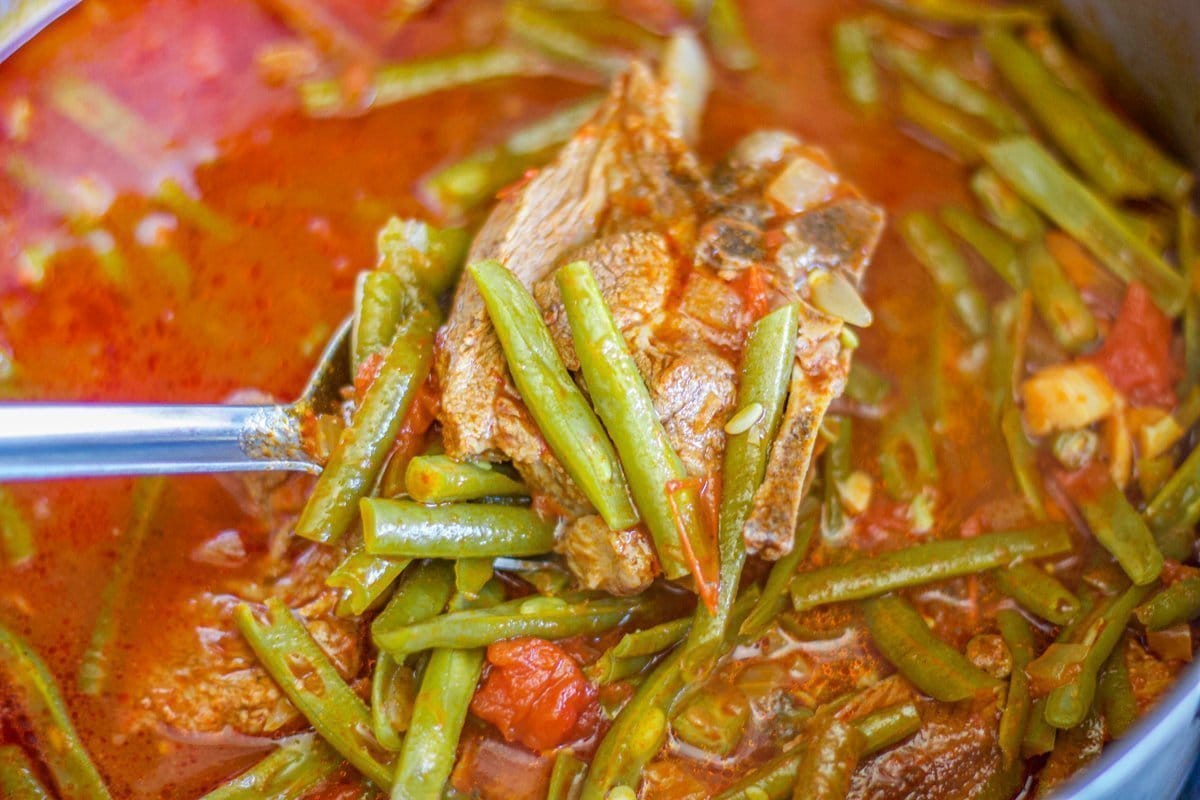
Fascia is hearty enough to serve on its own for a lower-carb option. I'll show you how to make this tasty stew over the stovetop and in an Instant Pot.
The Assyrian word for "green beans" is "Fasolia" and it also happens to be the name of this tasty green bean stew. In fact, green beans are called "Fasolia" by most Middle Easterners.
Fasolia is a popular dish in Lebanon, Jordan, and the Mediterranean region. Most of these regions also call this dish Fasolia. This includes Ethiopians, Palestinians, Egyptians, Turks, Arabs, and Greeks!
So whether it's an Assyrian Fasolia recipe or a Lebanese Fasolia recipe, it's cooked similarly.
Jump to:
In Assyrian homes, stews are served at least a few times a week, if not more. Stews like Bamya (Okra Stew), and Masheh (White Bean Stew) are no-brainers when it comes to preparing a quick and delicious dinner that covers all the food groups.
Various tomato sauce-based stews like this Fasolia recipe are served over white rice, along with plenty of fresh herbs like mint, cilantro, parsley, and basil. Scallions, radishes, and pickles are almost always also present.
Sometimes Middle Eastern bread, called "Samoon" is torn into pieces and placed in a bowl and the stew is poured over it. This might sound strange to you, but don't knock it until you try it!
Most Middle Eastern stews are prepared the same and have similar ingredients. The main difference is the vegetables added to the stew. Some stew examples include Zucchini Stew, Okra Stew, and Potato Stew.
🛒 What You Need For This Recipe
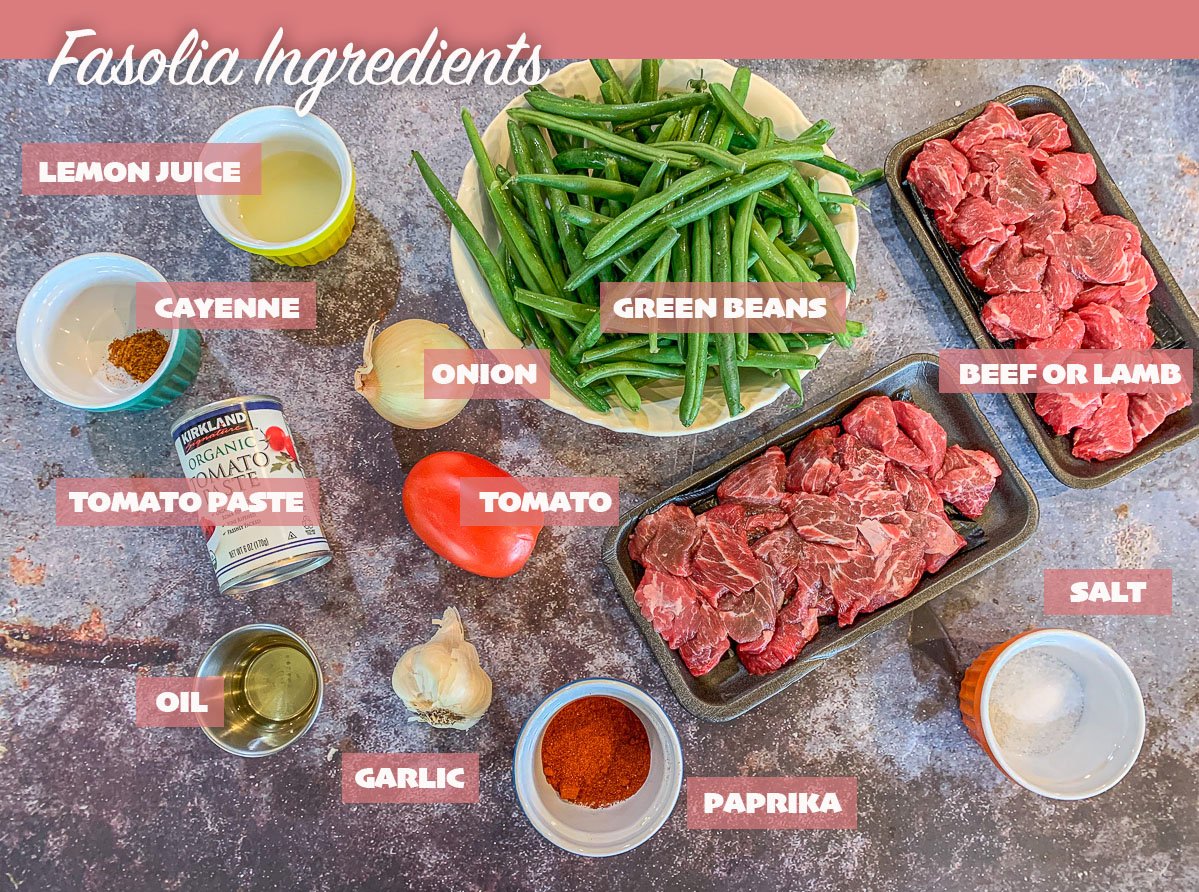
🔖 Ingredient & Substitutions
- Green Beans: Use fresh green beans whenever possible. Frozen green beans may also be used. Avoid using canned green beans because they are too soft and mushy, to begin with, and won't hold up in the Fasolia stew.
- Meat: My favorite meat to use is lamb, but beef may be used. Whenever possible, use meat with bones. The bones give the stew a richer taste.
- Spices: Cayenne pepper gives this stew a little extra kick. Feel free to leave it out if you're sensitive to heat.
- Oil: The oil you use is a matter of preference. I like to use vegetable oil in my stews but olive oil or avocado oil can be substituted.
🥣 How to Make Fasolia
Step 1: Slice rinsed meat into portions and add to a 5-quart Dutch oven. Add 5 cups of water, cover, and simmer for 30 minutes.
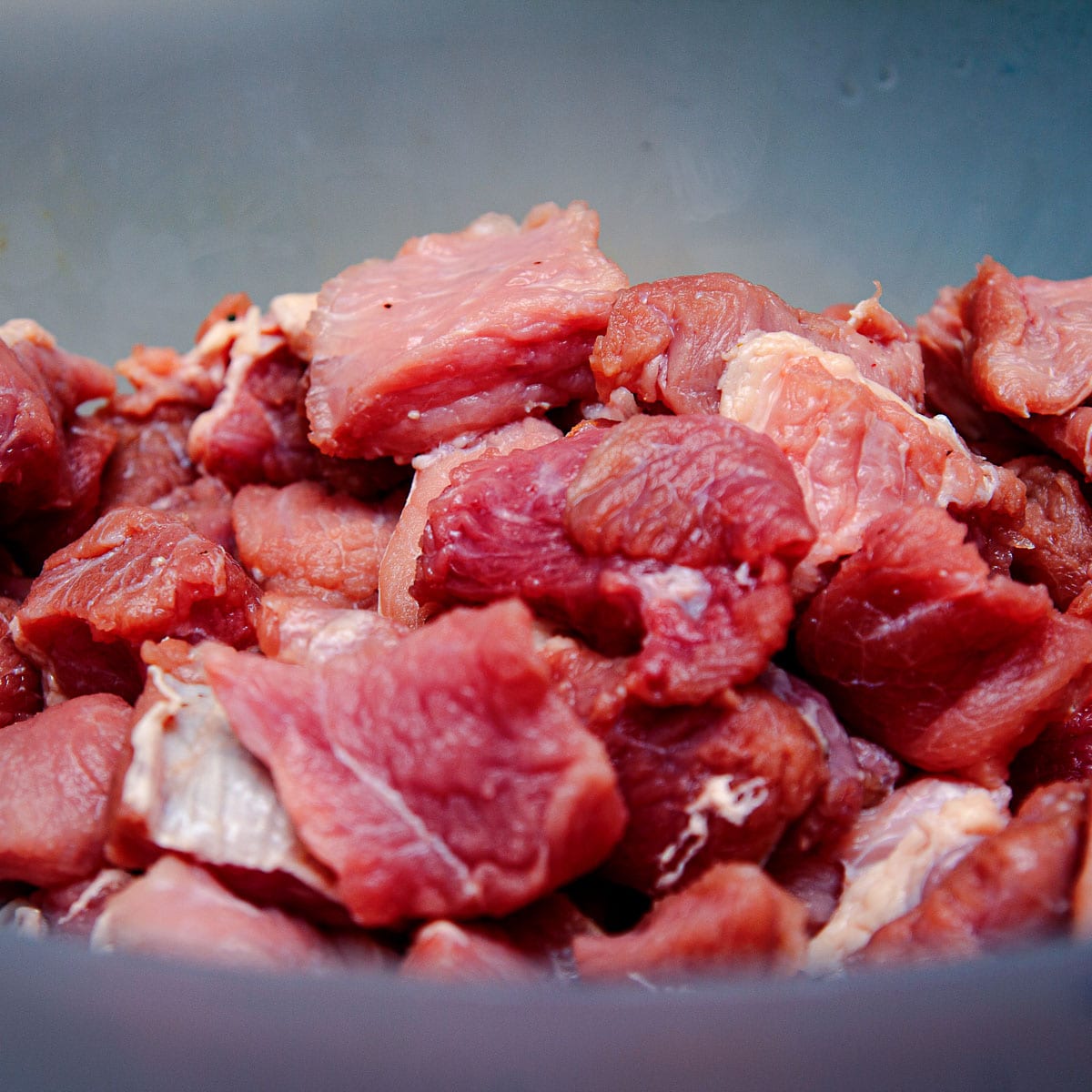
Step 2: While the meat is cooking, trim the ends from green beans, cut them in half, and slice them down the middle. Set aside.
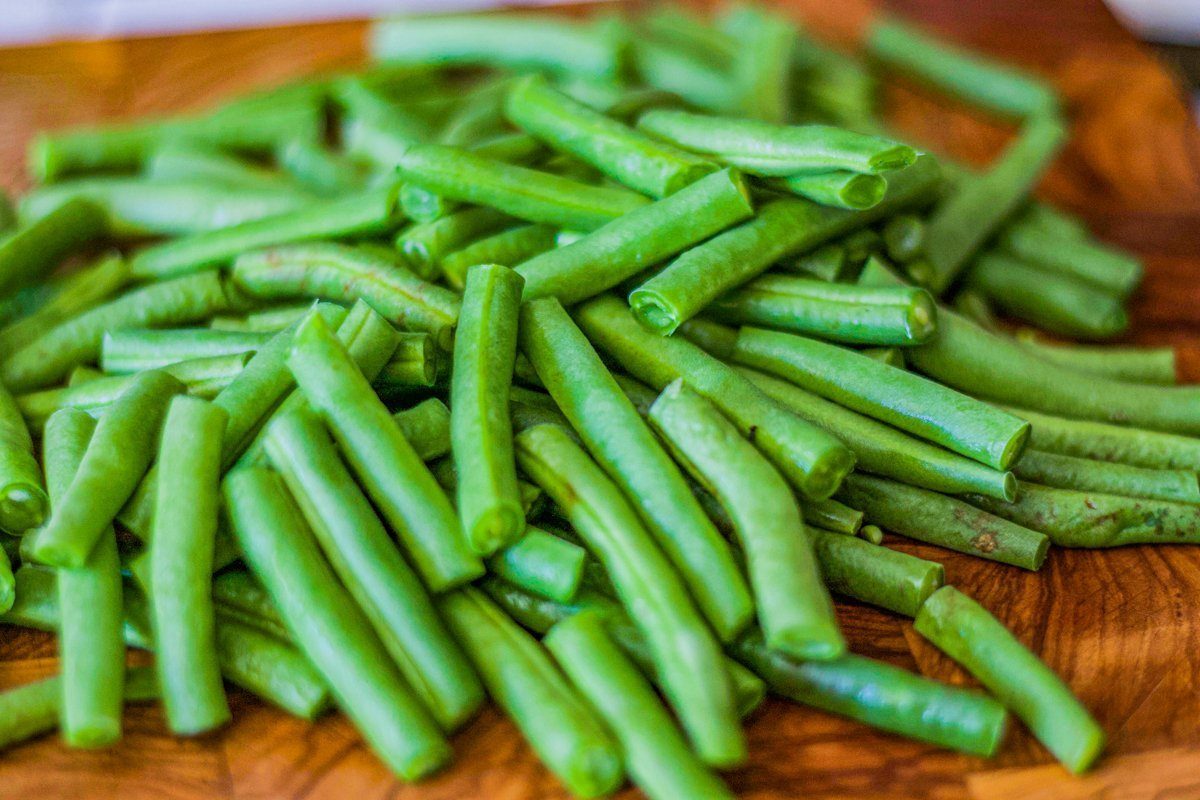
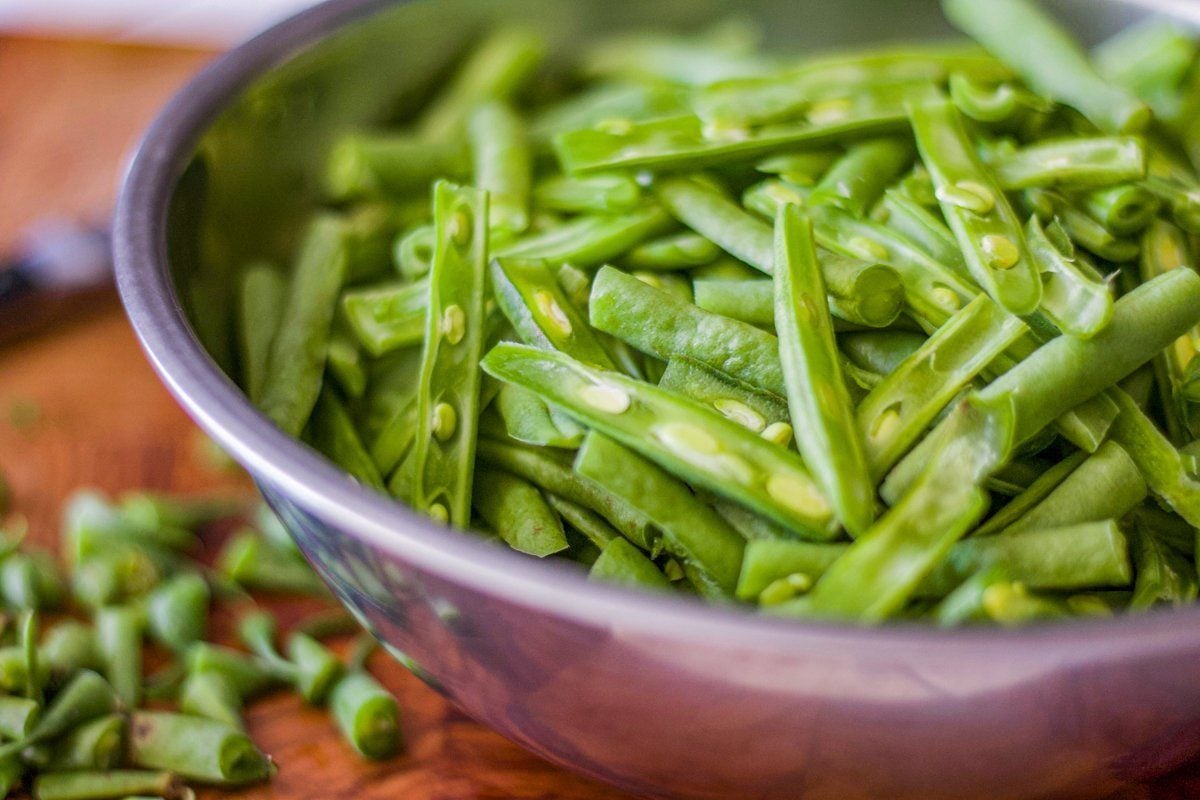
Step 3: Drain the contents of the Dutch oven through a strainer (over a bowl) to collect the broth. Rinse the meat and the pot.
Step 4: Return the meat back to the pot, along with oil, onion, and paprika. Cook over medium heat for a few minutes until the meat is browned and the onion is sautéed.
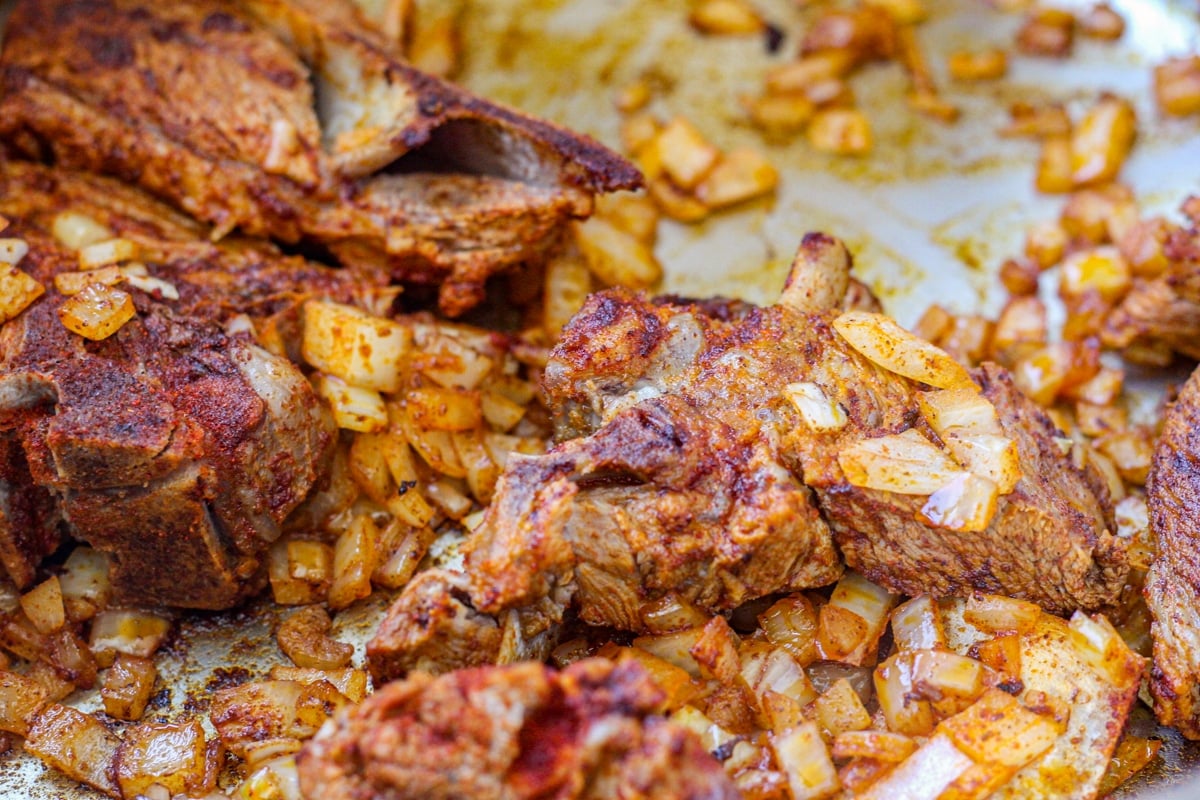
Step 5: Add the green beans, chopped tomato, and garlic to the Dutch oven. Dissolve tomato paste into the reserved hot liquid, and stir in salt, lemon juice, and cayenne pepper.
Would you like to save this recipe?

Step 6: Pour the broth mixture over the beans and stir gently. Bring to a boil, then cover and simmer, over low heat, for an additional 30 to 40 minutes.
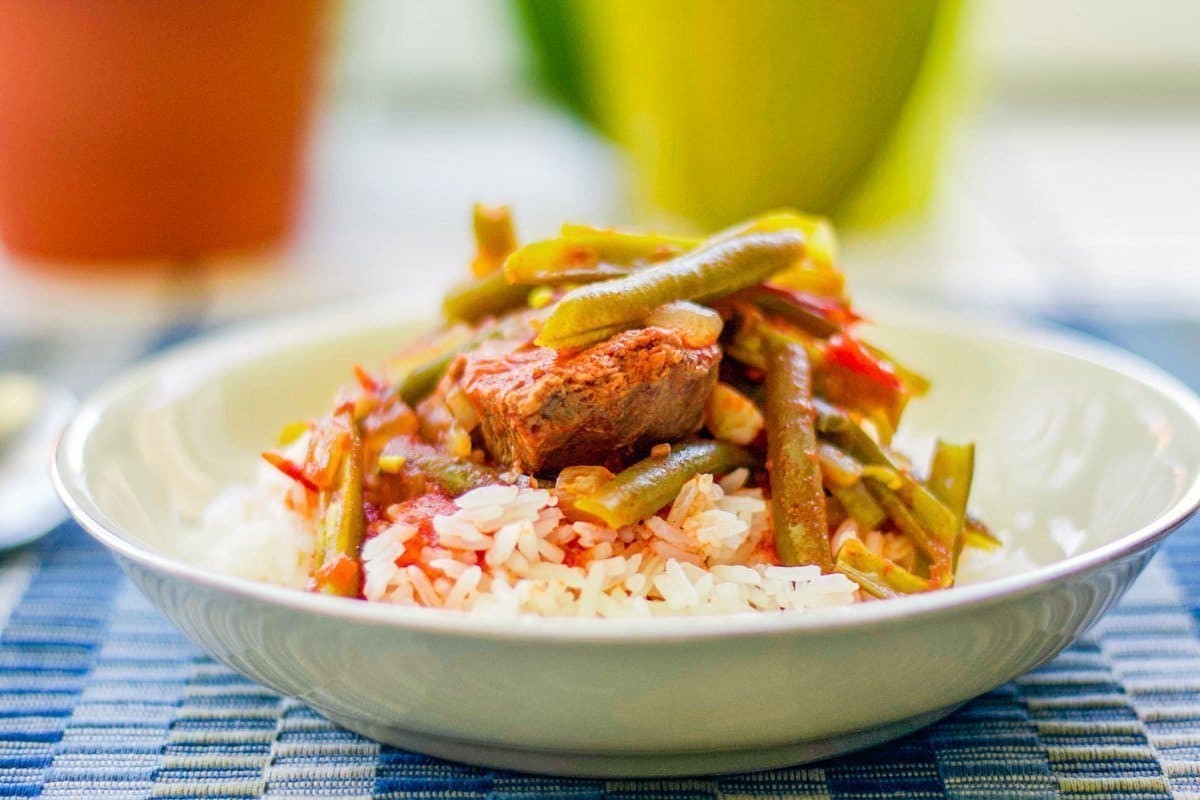
🍽 Serving Suggestions
Serve Fasolia over white rice or vermicelli rice. Another serving option is to serve the stew with Middle Eastern pita bread for dunking. Finally, you can eat the stew as-is for a lower-carb option.
♨️ How to Make Fasolia in a Pressure Cooker
Step 1: Set the pressure cooker to "sauté" then add oil and meat. Sauté the meat until browned.
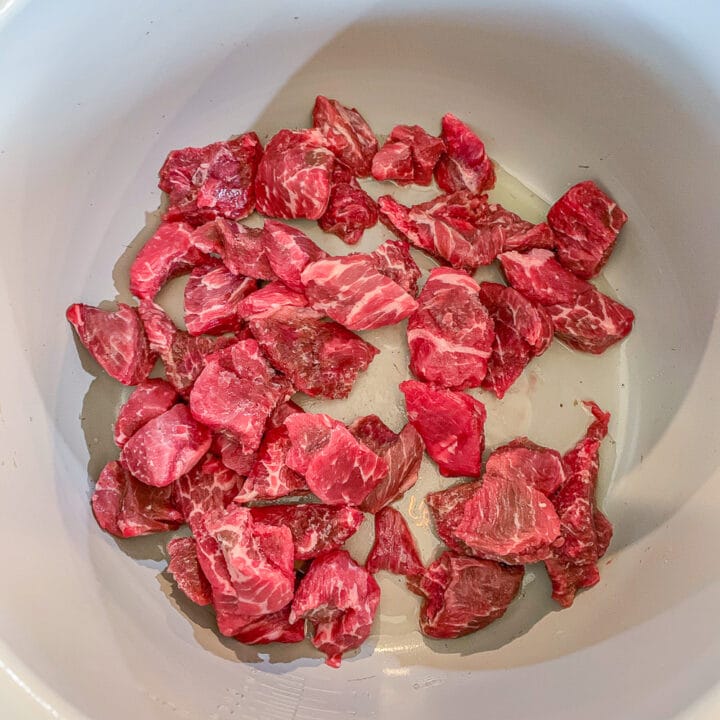
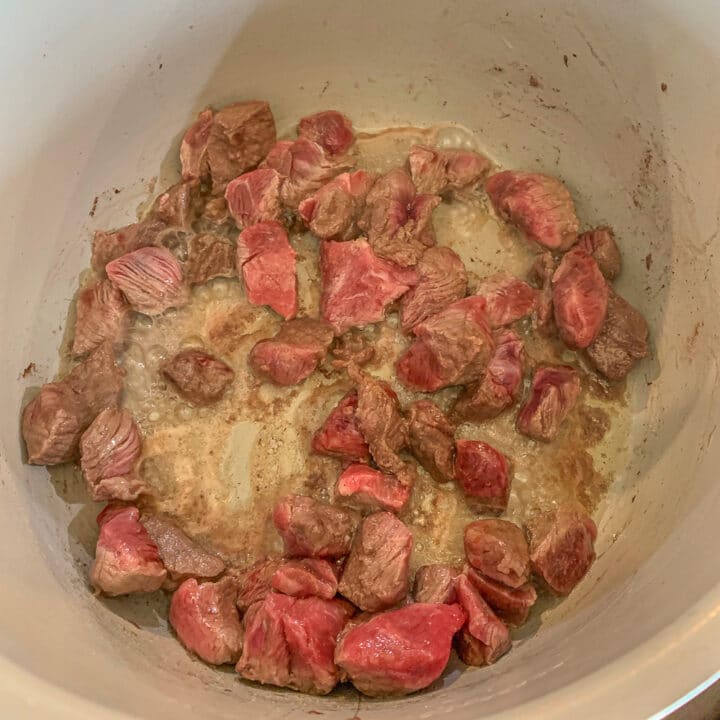
Step 2: Add onion and garlic and sprinkle with paprika while stirring.
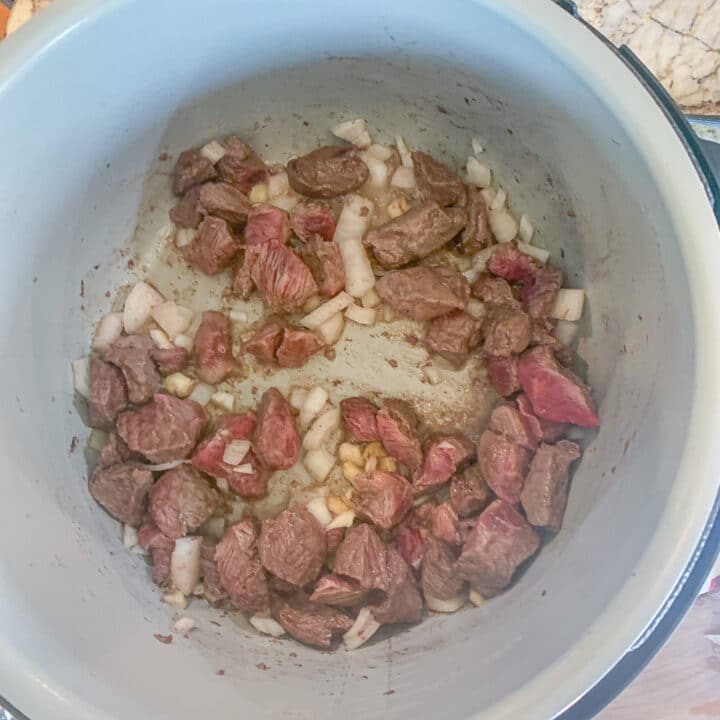
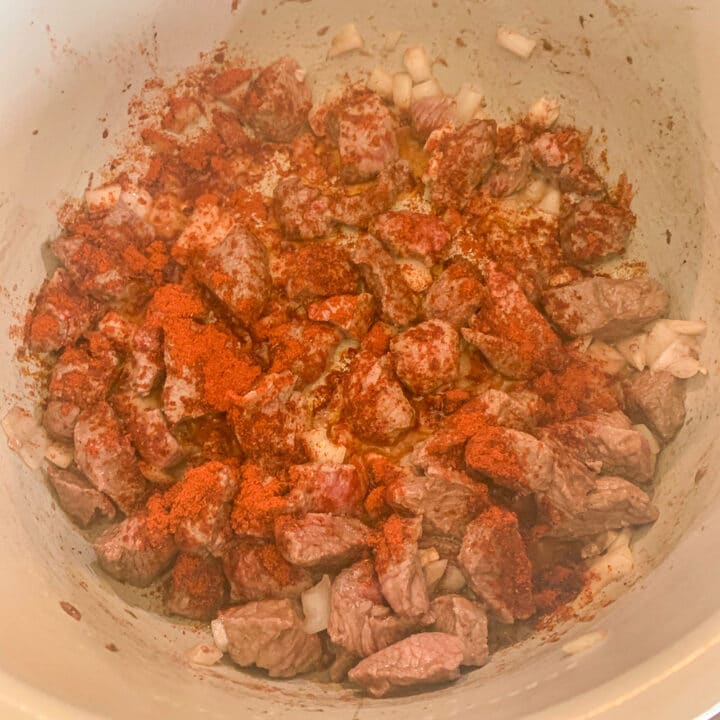
Step 3: Add green beans and diced tomatoes.
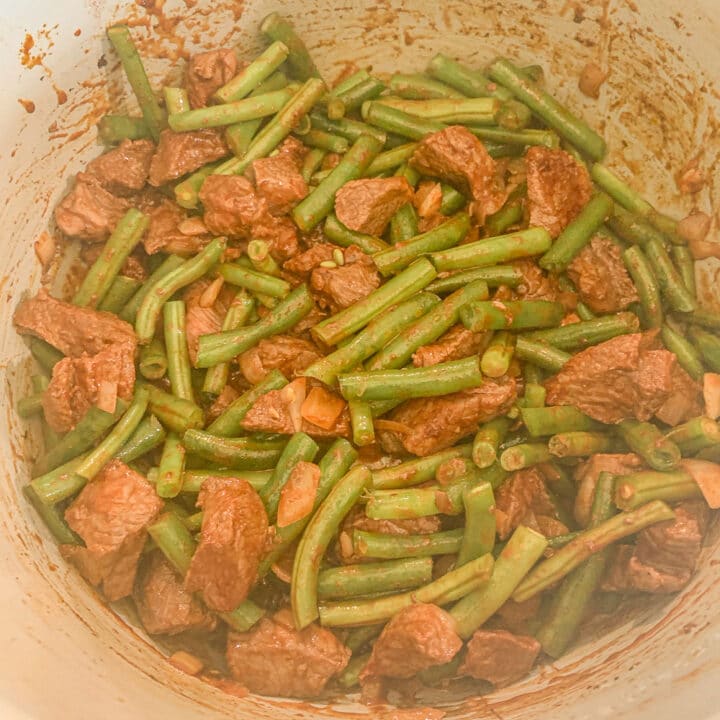
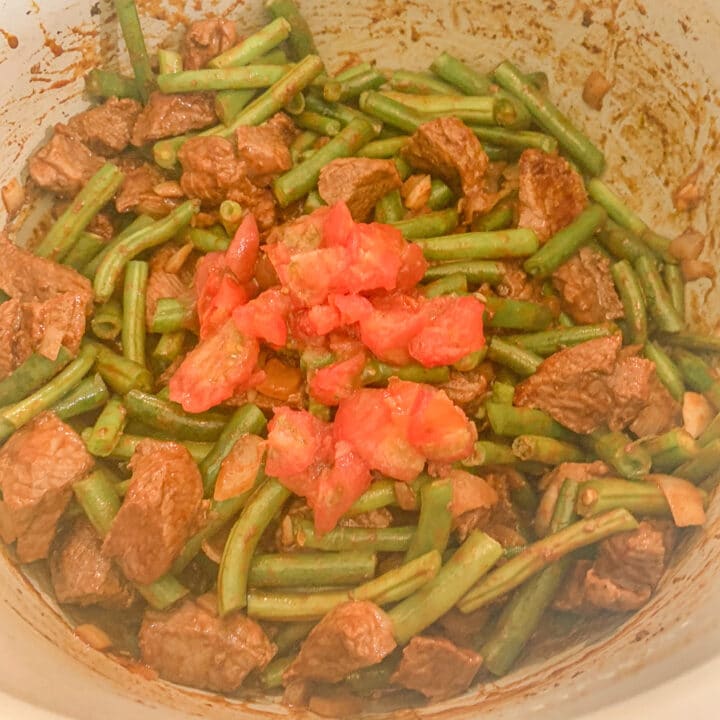
Step 4: Mix tomato paste with four cups of hot water until the tomato paste is dissolved. Add salt and lemon juice and stir to combine. Pour this mixture into the pressure cooker.
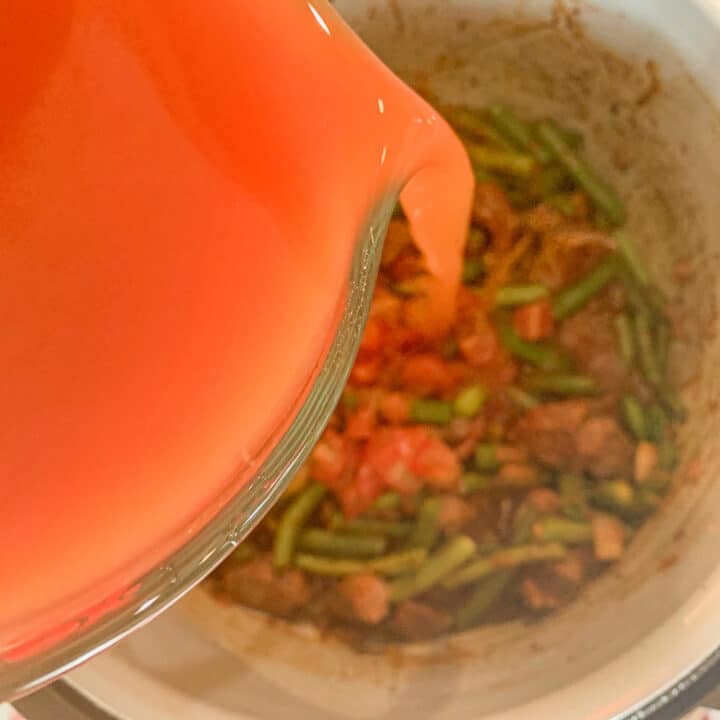
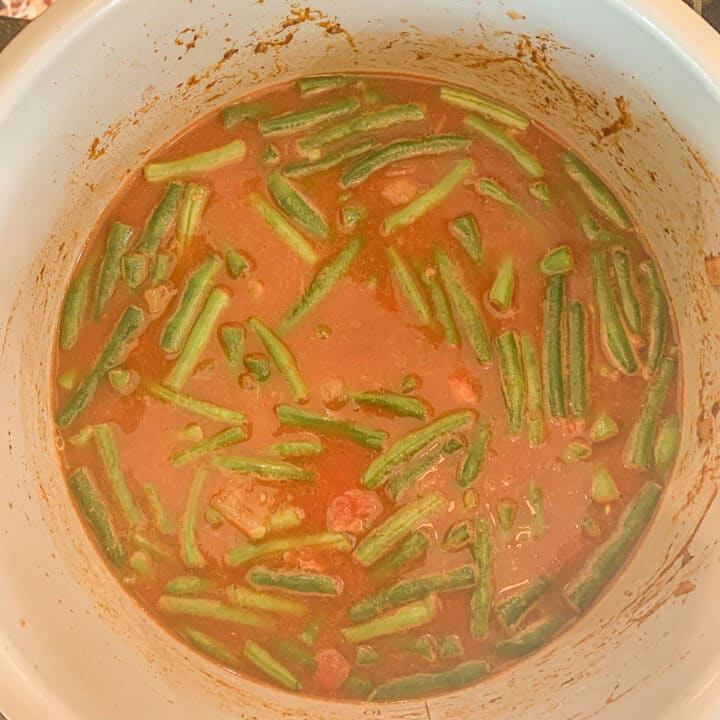
Step 5: Stir the entire contents of the pot and then lock the lid into place. Place the vent to "seal" and choose "pressure cook." Set the timer to 30 minutes. When the time is up, unseal the pressure valve (quick release) to release the pressure.
🤷🏻♀️ Recipe FAQs
Lamb adds an amazing flavor to Fasolia stews. As the lamb slowly cooks in the stew, it becomes very tender. So tender that teeth are not required! Beef is the next best thing, especially meaty bones. The bones enhance the flavor of Fasolia even more.
Just because you can do something, doesn't mean you should. In this instance, don't use canned green beans in any Fasolia recipe. The beans will fall apart during the long cooking time. Not to mention they will not be as flavorful as fresh green beans. Always use fresh green beans. The other alternative is frozen green beans.
👩🏼🍳 Pro Tips
- If you're lucky enough to have green beans in your garden, of course, use them.
- Assyrian stew always includes meat, unless prepared on Wednesdays or Fridays (when many Assyrians abstain from eating meat). To make vegetarian Fasolia, leave out the meat and use vegetable broth instead.
- To make Fasolia in a shorter amount of time try the pressure cooker instructions.
- Store any leftover Fasolia in the fridge in an airtight container for up to 5 days. For longer storage, freeze the Fasolia Stew in freezer bags for up to 3 months.
- To reheat Fasolia, pour the stew in a Dutch oven or medium-sized saucepan and heat, covered, over low heat. If reheating frozen Fasolia, defrost the stew in the fridge overnight then follow the instructions above.
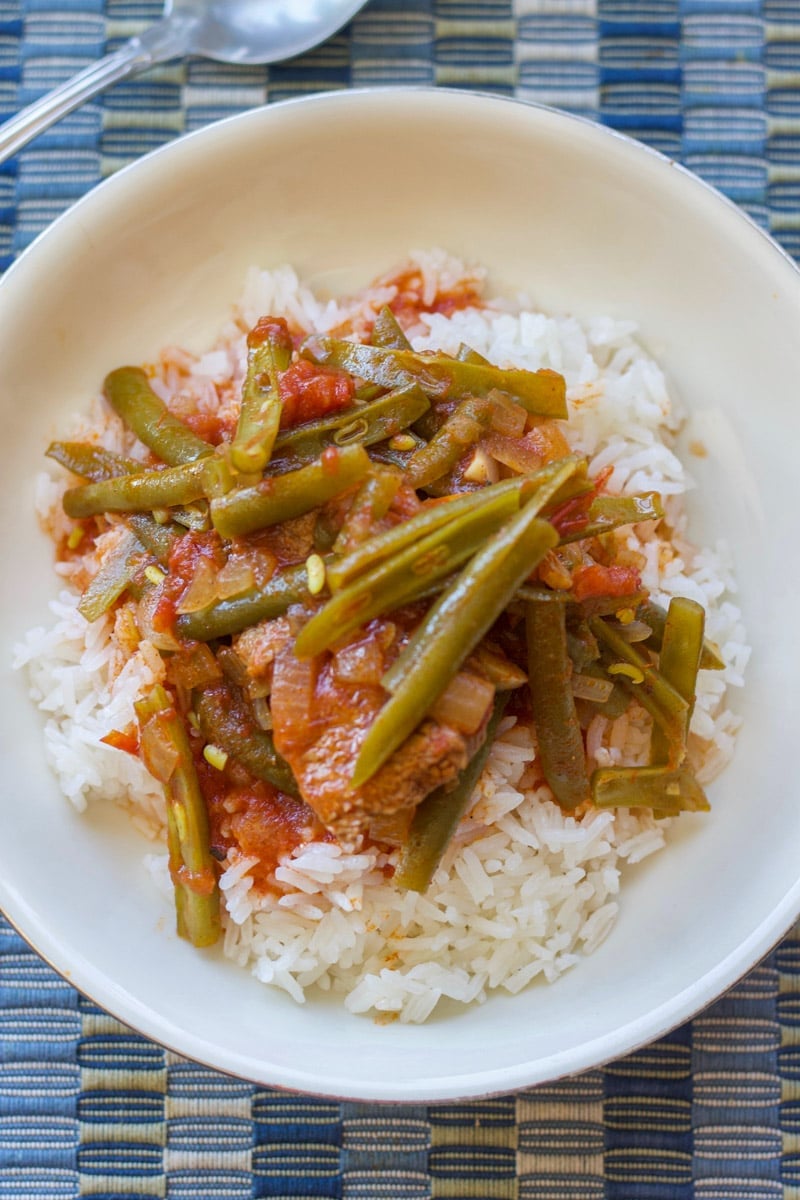
🍗 More Middle Eastern Stew Recipes
📖 Recipe
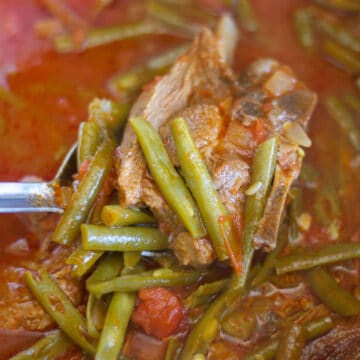
Fasolia (Green Bean Stew)
Equipment
Ingredients
- 1 lb stew beef or lamb (with bones)
- 4 cups fresh green beans
- 1 tablespoon vegetable oil
- 1 medium yellow onion (diced)
- 1 tablespoon paprika
- 1 large tomato (chopped)
- 4 cloves garlic (slivered)
- 6 ounce tomato paste
- 1½ teaspoon salt
- 1½ tablespoon lemon juice
- ¼ teaspoon cayenne pepper (optional)
Instructions
- Slice rinsed meat into portions and add to a 5-quart Dutch oven. Add 5 cups of water, cover, and simmer for 30 minutes.
- While the meat is cooking, trim the ends from green beans, cut them in half, and slice them down the middle. Set aside.
- Drain contents of the Dutch oven through a strainer (over a bowl) to collect the broth. Rinse the meat and the pot.
- Return the meat back to the pot, along with oil, onion, and paprika. Cook over medium heat for a few minutes until the meat is browned and the onion is sautéed.
- Add the green beans, chopped tomato, and garlic to the Dutch oven. Dissolve tomato paste into the reserved hot liquid, and stir in salt, lemon juice, and cayenne pepper.
- Pour the broth mixture over the beans and stir gently. Bring to a boil, then cover and simmer, over low heat, for an additional 30 to 40 minutes.
- Serve over white or vermicelli rice. Another serving option is to serve the stew with bread for dunking or eat as-is for a lower carb option.
Notes
- If you're lucky enough to have green beans in your garden, of course, use them.
- Assyrian stew always includes meat, unless prepared on Wednesdays or Fridays (when many Assyrians abstain from eating meat). To make vegetarian Fasolia, leave out the meat and use vegetable broth instead.
- To make Fasolia in a shorter amount of time try the pressure cooker instructions.
- Store any leftover Fasolia in the fridge in an airtight container for up to 5 days. For longer storage, freeze the Fasolia Stew in freezer bags for up to 3 months.
- To reheat Fasolia, pour the stew in a Dutch oven or medium-sized saucepan and heat, covered, over low heat. If reheating frozen Fasolia, defrost the stew in the fridge overnight then follow the instructions above.


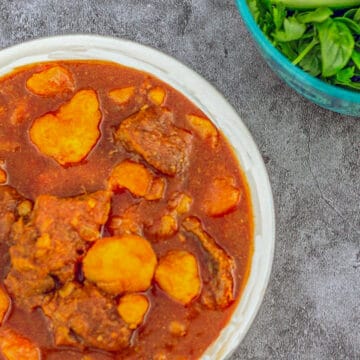
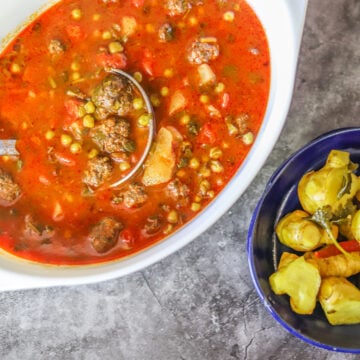
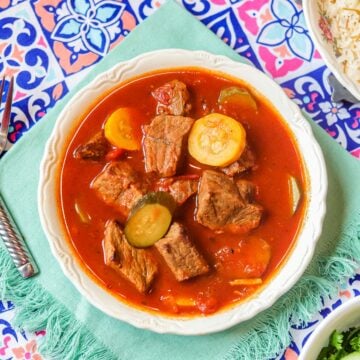
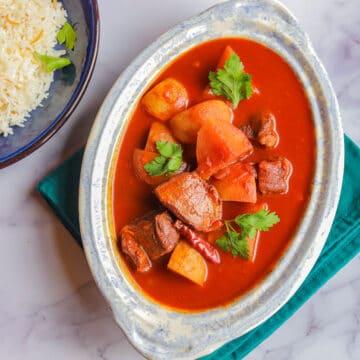
Kathleen Boyce says
This worked exactly as written, thanks!
Hilda Sterner says
Thank you, Kathleen. I appreciate the review!
Teresa Evers says
Hilda, this is my second time making this recipe. I loved it the first time and always said I would make it again soon. I made it last night, and served it over white rice. So good, I will eat it again today for dinner. It’s pretty simple, I did cook the lamb until it was very tender and used fresh tomatoes from the garden. I also shared this meal with my neighbor, Anita, and she loved it. Thank you Hilda.
Hilda Sterner says
Thank you so much for rating this recipe! So glad you liked it!
Loz P says
Great recipe! I adjusted it for 10 serves and it could've done with only 1/2 - 3/4 of the tomato paste quantity.
My fussy mother-in-law loved it and said it was even better than her recipe. She wasn't wrong haha!
Thank you!
Hilda Sterner says
Your comment made me chuckle! I'm glad she approved! Thank you so much for the review!
Judy Ann Bowen says
My Assyrian grandmother made a version of this but we called it Lobia Khoresh. She browned the meat in a Dutch oven, added stewed tomatoes and beef broth (just to cover the meat) and let it simmer until tender. Then she added fresh green beans and a cut up stick of butter. This melted into the stew. But the most important ingredient was cinnamon. She sprinkled the top liberally with cinnamon and stirred it in. Delicious! I have passed this recipe on to many friends, all non-Assyrian, and they love it! Served over Persian pilaf.
Hilda Sterner says
Hi Judy, We also make lobia (long beans) but it is prepared similarly to this recipe, just using long beans instead of green beans. I think the Persian version of these stews has the addition of cinnamon. I might have to try that!
Amber says
It is on the stove, last stage, as I write this.
But I thought my Aunt called it Koresh (spelling)
Hilda Sterner says
Hi Amber, Khoresh is the Persian word for stew. But that can be any stew... I hope you like it!
Rachel says
It is wonderful that you are ensuring this recipe continues on! My mother and her family were Persian Assyrian and Khuddish/Khuresh was served regularly. It’s better the next day after the flavors have blended and is easy to put together. The challenge for me is always the Riza. That perfectly butter soft rice is nerve racking to make. I hope everyone one gives this a try.
Hilda Sterner says
Hi Rachel, Thank you for stopping by and the review! I agree, I always had a hard time with the rice. My issue was I added too much water. Once I learned not to do that, the rest was a breeze.
Kathy Fisher says
Delicious. I will be making this on a cold winter's night. Thanks for this recipe.
Hilda Sterner says
Thanks, Kathy! I'm so glad you liked it.
Kelly Methey says
Had this today and it was absolutely delicious! I will be making this again and again! So good and easy to make! Thank you Hilda for another outstanding recipe!
Hilda Sterner says
Hi Kelly, Thank you so much for the review. I'm glad you enjoyed it. 🙂
Nadia says
followed your fasolia recipe today and it turned out to be the best shorwa I've ever made.
HildaSterner says
Thank you for the review, Nadia. So glad you enjoyed it!